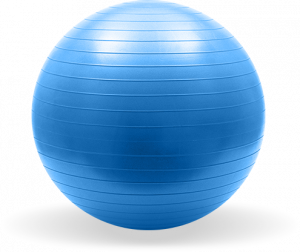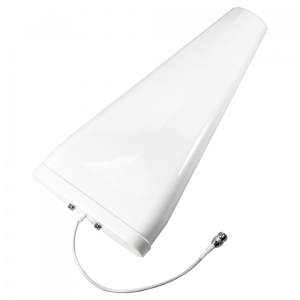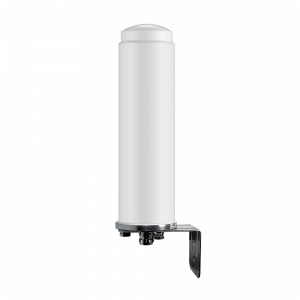Choosing the Right Antenna
With all this nerd talk going on around here with “cell phone signal boosters” and “frequencies” and “gain” and whatnot, it is easy to see that many people can become lost in all of the industry jargon. I call it “engineese” because I consider it a different language. Every NORMAL person in this world could care less about the radio frequency spectrum and how sun spots can impact satellite communications. That’s why God created engineers. It’s what I live for. And lucky for you I consider myself a pretty good translator of the “engineese” dialect. I hope that with this article I will be able to help you choose the right antenna for your project.
In this article, we will go over the basic antenna types and we will discuss when and where you might want to employ the different options.
“Milk Was a Bad Choice”

In Anchorman:The Legend of Ron Burgundy (one of my favorite movies), there is a part where the depressed Ron Burgundy, played by Will Ferrell, finds himself running a marathon. While he’s running the race, he takes a drink out of a milk carton and a curdled clump of milk falls into his mouth as he says, “Milk was a bad choice.” While choosing the wrong antenna won’t cause you to gag and vacate the contents of your stomach, it can leave you with a sour taste in your mouth when it comes to cell phone signal boosters.
Basic Types of Antenna
If you were in a situation where you had nothing left to live for, you could mozy over to antenna-theory.com and read up on the different antenna types. Clearly, at that point, you would have no need for a cell phone signal booster, because you probably wouldn’t have any friends to make a cell phone call to anyway. Perusing through the site, you would count more than 25 different types of antenna. You would read up on the countless spellbinding descriptions of the different antenna types, and you’d come to the conclusion (as I did) that as far as cell phone signal boosters are concerned, there are 2 basic types of antennas. Directional and Nondirectional.
Directional antennas have greater gain in one direction than they do in another direction. Nondirectional antennas (also known as omnidirectional) have an almost uniform gain in all directions.
You: “Why don’t they just make an antenna that has really good gain in all directions?”
Me: “Great! (in a sarcastic tone) Now I have to explain to you the concepts of gain and some antenna theory.”
What the Heck is Gain?
In my life, gain is the number of pounds I just put on over this most recent Thanksgiving holiday (Seriously, I just put on about 7 pounds this week). In the cell phone signal booster industry, gain means something a little different and you will hear the word “gain” a lot.
As you can probably guess from it’s name, gain is basically a measurement of how good an amplifier (or antenna) converts electrical signals to radio signals and vice versa. While gain is an important factor in determining the “how good” an amplifier or an antenna is, it’s not important to know the intricacies of gain to understand what it is. If you are a glutton for punishment (and you might be if you are still reading this), you can hit up this wikipedia page about antenna gain and dive into all the gory details. Suffice it to say that for the purposes of what we care about, gain is a measurement of “how good” a device is at converting energy.
Basic Antenna Theory
Strap on your seatbelt, because I’m going to try to quickly dive into some basic theory here. In physics and antenna theory, there exists a theoretical “perfect” antenna called the Isotropic Antenna. This antenna only exists in theory because in REAL life there is no such thing as a perfect antenna. But if there WERE a perfect antenna, it would have a perfect gain of one all around the center of the antenna. It would be like a perfectly round exercise ball.

If you were to measure the gain at any point around this perfect antenna, it would measure 1 (one). This would be the perfect antenna, meaning it would have a unity gain of 1 (one) anywhere around it.
Because of physics and physical antenna characteristics, it is impossible for this antenna to exist in real life. In order for it to exist, the energy would have to radiate from a perfect point. Because of connectors, cables, physical characteristics and whatnot, this type of antenna (like world peace or an unlimited Hostess Cupcake supply) cannot exist in the “real world”.
Real Antennas
Now, imagine if you were to balance a 30-pound weight on the top of this exercise ball. The exercise ball would “squish in” at the top and the bottom and would make the exercise ball look more like an oblong shape, like a delicious Gala apple. If you were to measure the gain around the exercise ball now, there would be higher than 1 (one) gain around the sides of the ball and the top and bottom of the ball would have gain of less than 1 (one). No new gain was added or created, we just squished the ball to make more gain on the edges and less gain at the top and bottom. This would be an example of an omnidirectional or non-directional antenna.
The same thing happens with a directional antenna. If we severely squish the exercise ball (like, by having myself lay on it) we would get a severe protrusion to the sides and next to zero gain on the top and bottom (because of my fatness squishing the ball). We didn’t create any more gain, we just moved the areas of greater gain by squishing the ball around.
This antenna gain is measured in dBi, which means “decibels over isotropic”. So if a directional antenna (like THIS wide band outdoor Yagi antenna) has 8 dBi of gain, that means that this antenna, at at least one point around it has a gain of 8 decibels higher than what the ideal isotropic antenna would be.
So… Which is the Right Antenna for Me?


Now, if you’re still with me, let’s chat about when you would want to use which antenna. Sometimes you will want to opt for an omnidirectional antenna, and other times you might want to choose a directional antenna. So which is the right antenna for when?
Choose a directional antenna if you know, or even have a pretty good idea of where your cell phone signal is coming from. Then you can aim your antenna at the cell phone tower and “shorten the distance” between you and the tower. There are a lot of great online tools to help you determine where your nearest cell phone towers are. CellReception.com is one of my favorites. If you don’t mind taking the time to adjust your antenna to get you the best signal, and you are not too close to the cell phone tower, a directional antenna is the right antenna for you.
If you have a great cell phone signal outside, but you just can’t seem to get good reception inside, then an omnidirectional antenna is usually the better choice. An omnidirectional antenna saves you the trouble of having to aim your outside antenna, but you sacrifice some gain for the added convenience. But in some areas, where there’s no shortage of cell phone towers, the omnidirectional antenna is better than blasting a directional antenna at the cell tower. In those situations, the omnidirectional antenna is the right antenna for your application.
Switching Up the Right Antenna
Whatever antenna you end up choosing, you need to understand that if your signal booster doesn’t seem to performing like you think it should be, it’s probably because you need to try a different antenna first. With most cell phone signal boosters offering a money-back guarantee (I offer a 45-day money-back guarantee on anything purchased from my shop), there’s almost no risk to trying an antenna on for size. Or better yet, if you are an RV user, or like to take your booster with you, keep both antennas and use whichever works best for where you are at.
I know that all of this information can seem daunting, but know that I am here for you! If you have any questions, need some help picking a booster or antenna, would like to run an idea past a booster expert or need anything else at all, drop me an email at [email protected] and I am happy to help out!
And, as always, if you are looking for the best place to buy cell phone signal boosters online, you can find everything that you need here in my shop. Thanks for stopping by, I’m excited to hear about your cell phone signal booster project!
– Rob


Sam Fairchild
Could you connect up both types of antennae to the booster some way and have both of them bringing in signals. Would that in any way improve the signal quality over having and using just one type of antenna. Thanks for understanding that I am in a category of “Absolute Non-nerd” and lack comprehension of how to get my VCR to stop blinking!
rob
You can! Use a splitter and connect both antennas. You take a little more loss in the system because of the splitter loss and the extra cable, but you can do it. This is great for situations where you might want to use the Yagi for a directional antenna and then gather some closer or bouncing signals with the Omni. Great idea Sam!
Ed
What about the various indoor antenna options? Panel, Dome, Stick, etc?
rob
Great question Ed! Most indoor antennas are directional (panel and dome). They have about a 90 degree output away from the front of the antenna.
The only omnidirectional indoor antennas are the whip antennas and the wide-band desktop antenna.